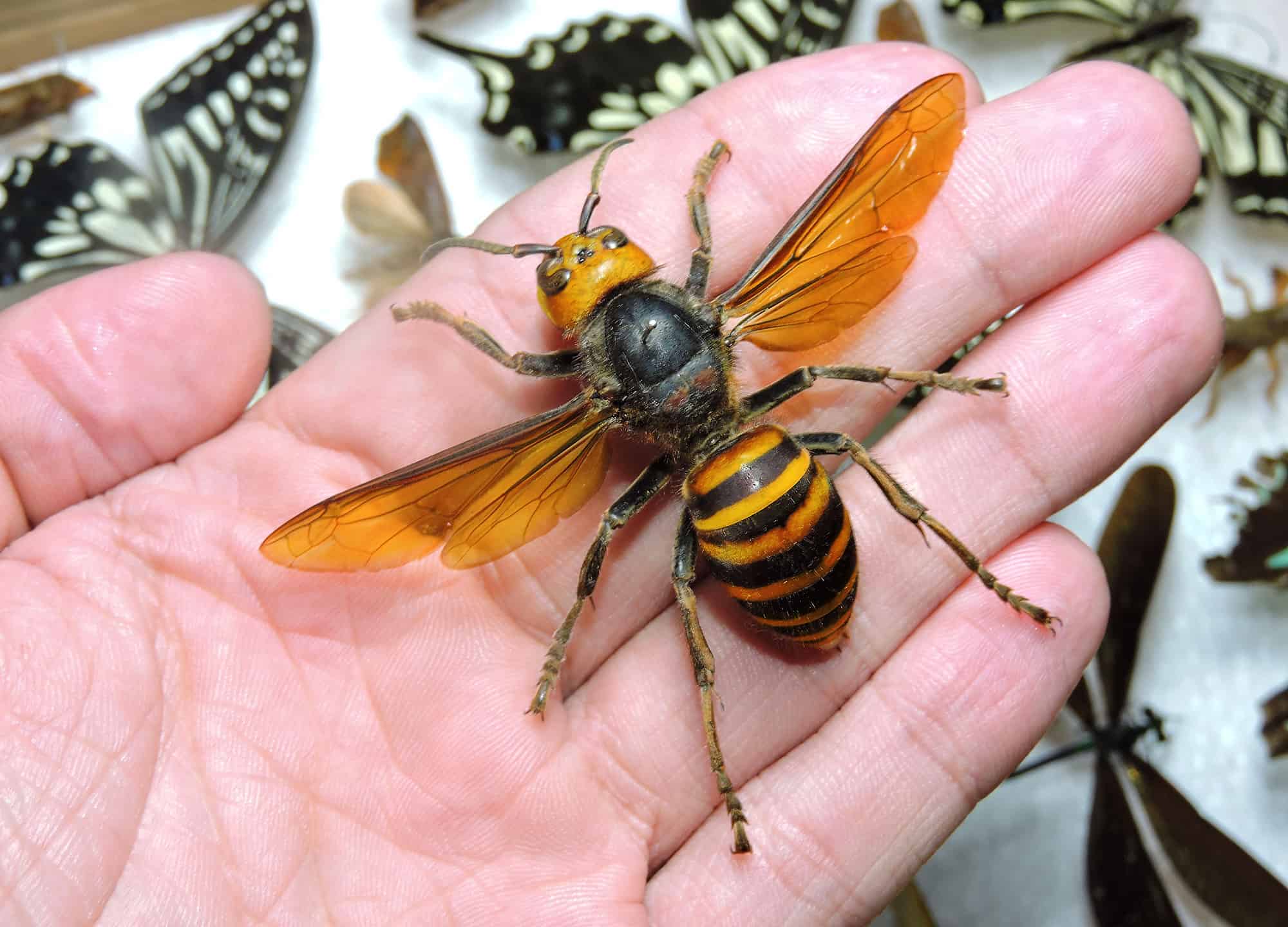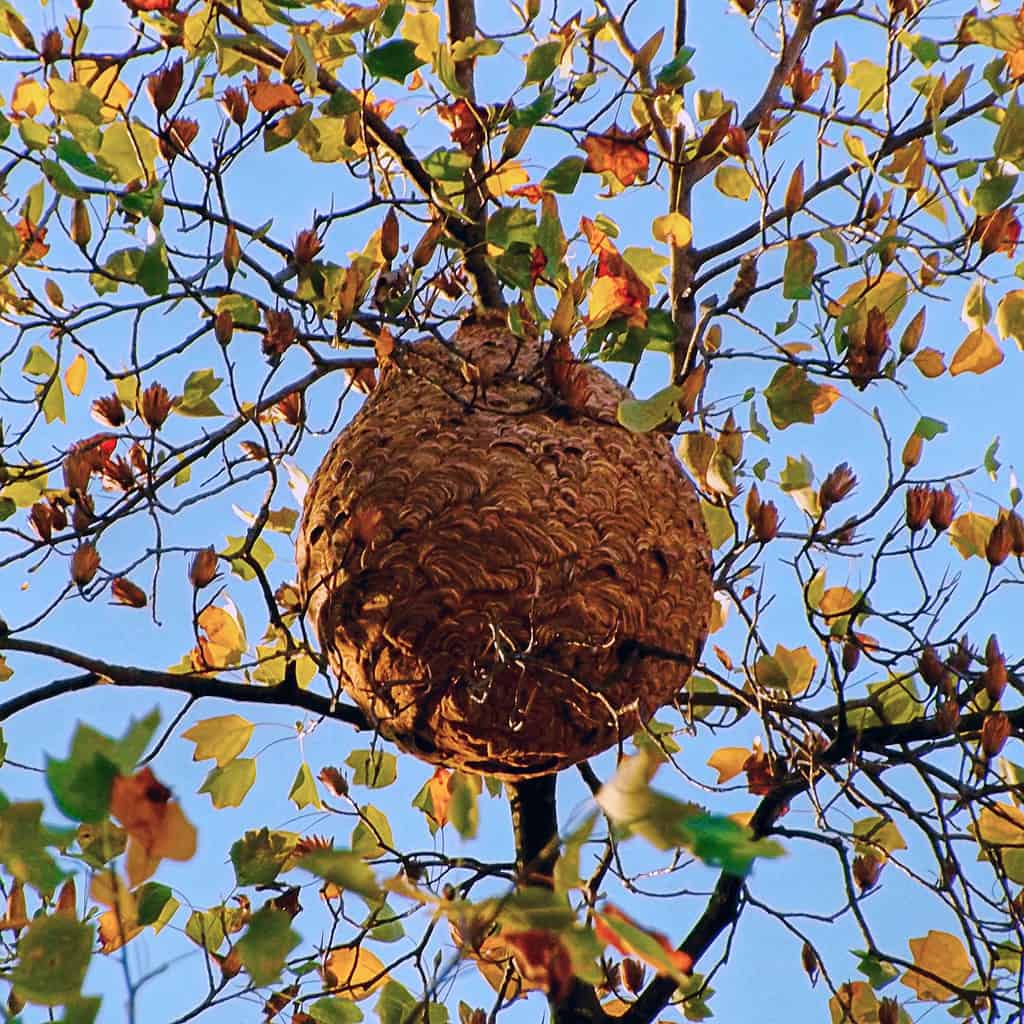Continue reading for our analysis...

If there’s ever a time when you don’t want to tackle a DIY pest removal job, it’s handling Giant Asian Hornets. These are the largest species of hornet in the world. The nest was located on the outside of a small structure. People in charge of the removal had to wear special suits to keep themselves separated from the hornets. The protective gear included respirators masks and face shields, as well as full body coverings.
The video begins with them removing parts of the exterior of the nest. Then, they use tools to collect as many hornets as possible for removal. This is a very dangerous job and they rely on their protective equipment to be able to get this close to so many hornets.
With the exterior portions of the nest removed, they turn to the inside structure. The hornets built it in the large open space of the bin. After removing one side, two people work together to gently lift the nest up. More hornets fly around as they pick up the massive nest. Turning it over, the bottom of the nest comes into full view. It has layers of circular comb structures that are built by the hornets. It’s clear that this nest was built over a long period of time, based on its massive size. The video includes a close-up video of the nest as well.
How Big Are Giant Asian Hornets?

The Asian Giant Hornet is not only invasive, it’s the cause of dozens of human deaths every year.
©iStock.com/kororokerokero
These hornets can get up to 2 inches long, the longest hornet on earth. Because they are so large, it’s easy to see their key features, including coloring and body design. This makes them somewhat easy to identify, although they can be confused with other large hornets.
They are native to parts of China but are invasive in other parts of the world. Known by the ominous name Murder Hornets, these large hornets can be quite concerning when they do appear in a new location. They get this nickname from the danger that they pose to humans. While they aren’t naturally aggressive, they can sting and even bite if they feel threatened. This is even more common when someone is tampering with their nest, which makes this video even more incredible.
How Large Do Asian Hornet Nests Get?

Asian Hornet nests may house colonies of several thousand individuals.
©Paula jorge, CC BY-SA 4.0 – License
The nest shown in the video above is not typical. The size of the nest is proportionate in relation to the size of the colony. If the colony doesn’t have many inhabitants, the nest won’t be as large. However, if there are multiple generations that have worked on the nest, which is not uncommon, the nest can grow to be the size of a soccer or basketball. There have been nests that are a foot wide and a foot long, which typically contain 100 to 700 hornets.
Mature nests will contain 2700 cells, although there have been nests that have held over 4600 cells. Nests are also only used one time and the worker bees will die when winter comes. Only the fertilized females will continue on to rebuild new colonies when the weather is warmer.
Thank you for reading! Have some feedback for us? Contact the AZ Animals editorial team.






